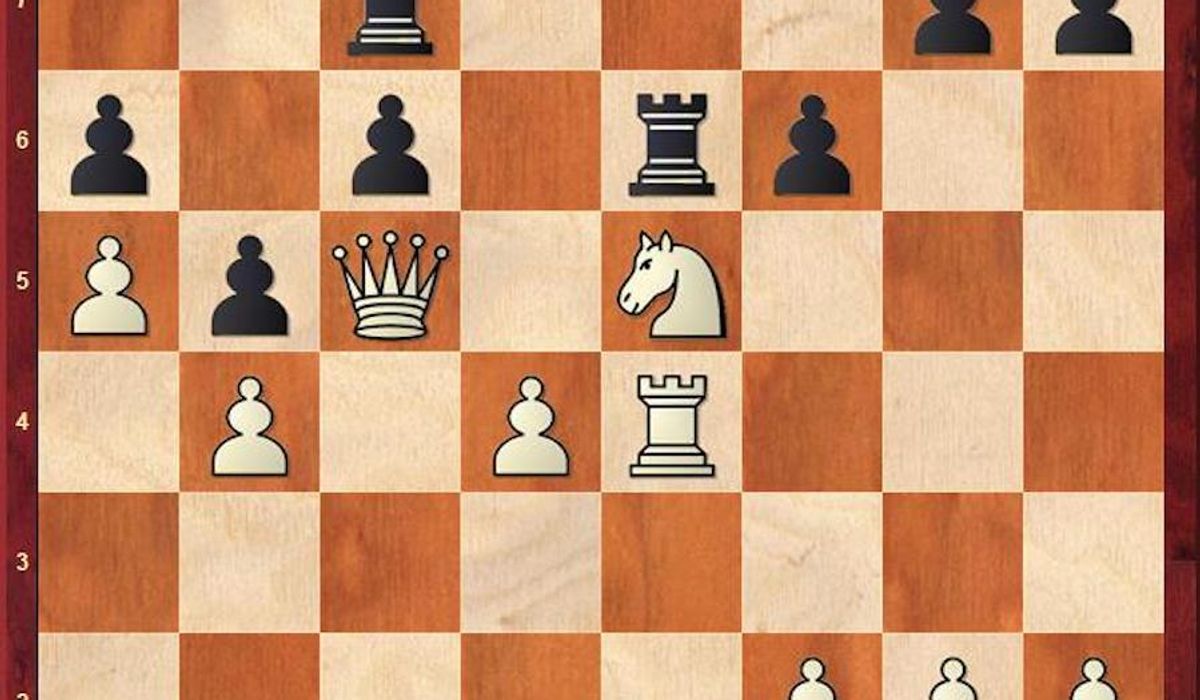
Magnus Carlsen is sounding a little cocky — and history suggests he may have a right to preen.
There have been some 60 or so world championship matches (the numbers get a little fuzzy with the Split Crown Era of the late 1990s and early 2000s) since the mid-19th century, and there have been no real shocking upsets on the order of Buster Douglas knocking out Mike Tyson or the 1969 Mets winning the World Series.
Challengers and slight underdogs have won the crown, but Bobby Fischer beating Boris Spassky and Vladimir Kramnik dethroning Garry Kasparov didn’t exactly blindside the oddsmakers.
So the Norwegian world champ could be excused for some less-than-laudatory comments about his challenger, Russian GM Ian Nepomniachtchi, ahead of their 14-game title match that begins Friday in Dubai. Carlsen, the world’s No. 1-rated player for the past decade, has far more title match experience (three successful defenses so far) than his opponent, comes in on a hot streak and appears to have an edge in temperament over the sometimes inconsistent Nepomniachtchi.
The match — with just five rest days — has a $2 million overall purse and runs through Dec. 14, with a rapid and blitz playoff Dec. 16 if needed.
In recent comments to a Norwegian broadcasting outlet that he may one day regret, Carlsen suggested his opponent doesn’t react well to adversity and that Chinese GM Ding Liren or U.S. No. 1 Fabiano Caruana — both higher rated than the Russian — would have been a tougher pairing.
“I thought [before the Candidates tournament] that anyone else winning would be a good outcome for me, and I still feel that way,” Carlsen said.
“Nepo,” for his part, might want to channel the energy for former champs Alexander Alekhine of Russia and Max Euwe of the Netherlands, who pulled off the two biggest upsets in championship match history.
Cuban Jose Raul Capablanca, who had defeated the great Emanuel Lasker just six years earlier, was considered near-unbeatable when the up-and-coming Alekhine took him on in Argentina in the fall of 1927.
But the champ got off on the wrong foot with a Game 1 loss and suffered a shocking 6-3 defeat over the course of the 34-game match. The first game’s Winawer French was the only king’s pawn opening of the match, which would feature a near-interminable string of Queen’s Gambits, and the champ’s butter-smooth positional style is nowhere to be seen.
White’s clumsy 10. Nd1?! 0-0 11. Ne3 Nxe3 12. Bxe3 Rfe8 13. Nf4 (the knight has “no future here,” Alekhine later wrote) Bd6! 14. Rfe1 (14. Nxd5?! Bxh2+ 15. Kxh2 Qxd5 16. c4 Qh5+ 17. Rad8, with a rook lift coming, looks dangerous, but why White rejects the natural, reinforcing 14. c3 here is a mystery) Nb4 15. Qb3 Qf5 16. Rac1? (tougher was 16. Nd3 Nxd3 17. Qxd3 Qxd3 18. cxd3 Bb4 19. Rec1, though Black clearly has the better endgame structure) leads to the loss of a clear pawn after the simple 16…Nxc2! 17. Rxc2 Qxf4 and White can’t recapture because of the back-rank mate.
Capablanca regroups and puts up a spirited fight (22. Bd2!, temporarily sacrificing a pawn, offers real drawing chances), but Black’s 30. Qd1 Re6!, giving up the extra material to liberate the d-pawn and dominate the e-file, keeps Black on top.
After 35 Rd8 d4, Black has obtained the ideal set-up for the final assault, and Alekhine characterizes White’s next move as a sign of “despair”: 36. a4 Re1+ 37. Kg2 Qc6+ 38. f3 Re3 (the White defensive fortress cannot hold) 39. Qd1 Qe6 40. g4 Re2+ 41. Kh3 (Kf1 Rh2 42. Kg1 Qe5 wins) Qe3 42. Qh1 Qf4! (decisive — White’s queen can’t stop …Re2-f2 and continue guarding the f-pawn) 43. h5 Rf2, and Capablanca conceded in the face of lines like 44. hxg6+ Kg7 45. Rd7 Rxf3+ 46. Kh4 Qh6 mate.
—-
Alekhine in turn was a heavy betting favorite over Euwe in their 1935 match, only to go down to a stunning 15 1/2-14 1/2 defeat. (Alekhine would get back the crown in a 1937 rematch.)
Euwe showed a hint of his underappreciated strength, handing the champ his only loss in a strong tournament in Zurich in 1934 in their last head-to-head encounter before the first title fight. It’s a rare game in which the great Alekhine is outplayed in pretty much every phase of the contest.
Black’s QGD Janowski Defense (3…a6) is actually a pet line for Carlsen as well, but here after 17. Rab1 Re7 18. a4, Euwe as White has obtained a nice positional edge while Black’s pieces, especially the bishop on b7 and the knight on h4, are not really doing much.
White’s 19. a5 b5 saddles Alekhine with a terminally backward c-pawn, and worse, reduces the aggressive champ to passive, defensive chess for the remainder of the contest. White breaks open the center with 28. e4!? (Ne2 Nd7 29. Nxd7 Rxd7 30. Nf4 Rf6 31. Nd3 preserves the bind on Black’s cramped game) Nxe4 29. Nxe4 dxe4 30. Rxe4, and cements his edge with a neat tactical finesse.
Thus: 30…f6? (see diagram; 30…Ne7 31. Rce1 f5 allows Black to slog on) 31. Nf7! Qe8 (sadly for Black, 31…Kxf7 leads to 32. Qh5+ Ke7 33. Rxe6+ Kxe6 34. Re1+ Kd6 35. Qc5+ Kd7 36. Qf5+ Kd6 37. Qe6 mate) 32. Rxe6 Qxe6 33. Nd8!, cheekily squatting on the Black queen’s home square and winning the ill-favored Black c-pawn after all.
White’s technique is impeccable, providing shelter for his king before marshaling his pieces for the finale: 43. Qe4+! (trading queens on White’s terms) Qxe4+ 44. Rxe4 Kg8 (Rd7 45. Re8 Nd6 48. Ra8) 45. Nb8 Kf7 (Ra7 46. Re8+) 46. Nxa6 Rd7 47. Rd4 Ne7 48. d6 Nf5 49. Rd5 Nxd6 50. Nc5 Rd8 51. Ne4 Nb7 (Ke6 52. Rxd6+ Rxd6 53. Nxd6 Kxd6 is an elementary win for White) 52. a6! — clever to the last.
It’s over on 52…Ke6 (Rxd5 53. axb7 Rd8 54. Nd6+ Ke6 55. Nc8 and wins) 53. Rxd8, and Black resigns ahead of 53…Nxd8 54. a7, giving White a new queen.
Capablanca-Alekhine, World Championship Match, Game 1, Buenos Aires, September 1927
1. e4 e6 2. d4 d5 3. Nc3 Bb4 4. exd5 exd5 5. Bd3 Nc6 6. Ne2 Nge7 7. O-O Bf5 8. Bxf5 Nxf5 9. Qd3 Qd7 10. Nd1 O-O 11. Ne3 Nxe3 12. Bxe3 Rfe8 13. Nf4 Bd6 14. Rfe1 Nb4 15. Qb3 Qf5 16. Rac1 Nxc2 17. Rxc2 Qxf4 18. g3 Qf5 19. Rce2 b6 20. Qb5 h5 21. h4 Re4 22. Bd2 Rxd4 23. Bc3 Rd3 24. Be5 Rd8 25. Bxd6 Rxd6 26. Re5 Qf3 27. Rxh5 Qxh5 28. Re8+ Kh7 29. Qxd3+ Qg6 30. Qd1 Re6 31. Ra8 Re5 32. Rxa7 c5 33. Rd7 Qe6 34. Qd3+ g6 35. Rd8 d4 36. a4 Re1+ 37. Kg2 Qc6+ 38. f3 Re3 39. Qd1 Qe6 40. g4 Re2+ 41. Kh3 Qe3 42. Qh1 Qf4 43. h5 Rf2 White resigns.
Euwe-Alekhine, Zurich International, Zurich, Switzerland, July 1934
1. c4 e6 2. d4 d5 3. Nc3 a6 4. cxd5 exd5 5. Bf4 Nf6 6. e3 Bd6 7. Bxd6 Qxd6 8. Bd3 Nc6 9. Nge2 O-O 10. a3 Ne7 11. Qc2 b6 12. b4 Bb7 13. O-O Rfe8 14. Ng3 Ng6 15. Rfc1 Nh4 16. Nce2 c6 17. Rab1 Re7 18. a4 Rae8 19. a5 b5 20. Nf4 Rc7 21. Qc5 Qd7 22. Re1 Ng6 23. Bf5 Qd8 24. Nd3 Bc8 25. Rbc1 Ne7 26. Bxc8 Nxc8 27. Ne5 Re6 28. e4 Nxe4 29. Nxe4 dxe4 30. Rxe4 f6 31. Nf7 Qe8 32. Rxe6 Qxe6 33. Nd8 Qe4 34. Nxc6 h6 35. d5 Qd3 36. h3 Qd2 37. g3 Kh8 38. Kg2 Qd3 39. Re1 Kh7 40. Re3 Qd2 41. Re8 Qd3 42. Qd4 Qc4 43. Qe4+ Qxe4+ 44. Rxe4 Kg8 45. Nb8 Kf7 46. Nxa6 Rd7 47. Rd4 Ne7 48. d6 Nf5 49. Rd5 Nxd6 50. Nc5 Rd8 51. Ne4 Nb7 52. a6 Ke6 53. Rxd8 Black resigns.
• David R. Sands can be reached at 202/636-3178 or by email at [email protected].








